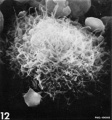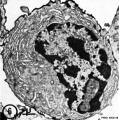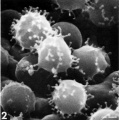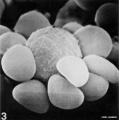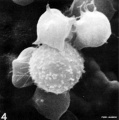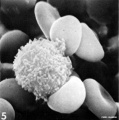Immune System - Antibody Development: Difference between revisions
(Created page with "==Introduction== [[File:Lymphatic_vessel_development.jpg|thumb|Lymphatic vessel development<ref><pubmed>19138383</pubmed>| [http://www.ncbi.nlm.nih.gov/pmc/articles/PMC2646268...") |
mNo edit summary |
||
| Line 1: | Line 1: | ||
{{Header}} | |||
==Introduction== | ==Introduction== | ||
[[File:Lymphatic_vessel_development.jpg|thumb|Lymphatic vessel development<ref><pubmed>19138383</pubmed>| [http://www.ncbi.nlm.nih.gov/pmc/articles/PMC2646268 PMC2646268] | [http://genomebiology.com/2008/9/12/243 Genome Biology]</ref>]] | [[File:Lymphatic_vessel_development.jpg|thumb|Lymphatic vessel development<ref><pubmed>19138383</pubmed>| [http://www.ncbi.nlm.nih.gov/pmc/articles/PMC2646268 PMC2646268] | [http://genomebiology.com/2008/9/12/243 Genome Biology]</ref>]] | ||
| Line 113: | Line 114: | ||
{{Glossary}} | {{Glossary}} | ||
{{Footer}} | {{Footer}} | ||
Revision as of 20:32, 11 March 2014
| Embryology - 26 Apr 2024 |
|---|
| Google Translate - select your language from the list shown below (this will open a new external page) |
|
العربية | català | 中文 | 中國傳統的 | français | Deutsche | עִברִית | हिंदी | bahasa Indonesia | italiano | 日本語 | 한국어 | မြန်မာ | Pilipino | Polskie | português | ਪੰਜਾਬੀ ਦੇ | Română | русский | Español | Swahili | Svensk | ไทย | Türkçe | اردو | ייִדיש | Tiếng Việt These external translations are automated and may not be accurate. (More? About Translations) |
Introduction


Development of the immune system will also link to cardiovascular development notes (blood and vessel) and bone marrow development. Two organs which also relate to this system are the thymus and spleen, which have in the past been included in endocrine and gastrointestinal tract development respectively. There are now also movies showing lymphocyte (B and T cells) traffic within adult lymph nodes.
During prenatal development, maternal IgG antibodies are transferred from about week 13 (GA) across the placenta, from the maternal lacunae syncytiotrophoblast cell endosomes bind IgG through neonatal Fc receptors.
Some Recent Findings
|
Recent References | References
T Lymphocyte Development
A study of cord blood from 19 early second and third trimester fetuses (GA 18-36 weeks) and 16 term newborns (GA 37-42 weeks).[7]
- Percentage of lymphocytes in fetal white blood cells was 79.3%, reducing to 40% by term birth
- higher than that of adults.
- Mononuclear cells (cord blood mononuclear cells (CBMC)
- fetal mononuclear cells were unable to produce IL-2, IL-4 or IFN-gamma.
- spontaneously secreted IL-10, IL-6 and TNF-alpha in vitro.
- fail to respond to mitogen (PHA) or allogeneic stimulation in vitro.
- Stimulation with PHA up-regulated the production of IL-10, IL-6 and TNF-alpha substantially.
- CD3+ T cells in fetal (40.1%) and neonatal (42.4%)
- lower than that of men (59.6%) and pregnant women (53.6%).
- CD8+ T cells (9.5%)
- gamma delta - T cells (0.5%)
- NK cells (4.8%)
Maternal Antibodies
During prenatal development, maternal antibodies are transferred across the placenta to the fetus. Immunoglobulin G (IgG) is transferred across the syncytiotrophoblast cell layer is mediated by the Neonatal Fc receptor (FcRn). Once inside placental villi, immunoglobulins then need to enter fetal circulation by crossing the second cellular endothelial cell layer by an as yet unknown mechanism.
During postnatal development, maternal antibodies are transferred by maternal milk across the neonatal gastrointestinal tract epithelium.
- Links: Placenta Development | Milk
Histology
The images below are from adult immune Lymph Nodes.
Immune Cells
- Human natural killer cells (NK) - originate from CD34(+) hematopoietic progenitor cells.
Adult Lymphocyte Histology
- Lymphocyte EM Images: T and B Lymphocytes 1 TEM | T and B Lymphocytes 2 TEM | T Lymphocyte SEM | B lymphocyte 1 TEM | B lymphocyte 2 TEM | B lymphocyte 3 TEM | Plasma Cell TEM | T2 Lymphocyte 1 TEM | T2 Lymphocyte 2 TEM | lymphocyte rosettes | T lymphocyte 1 | T lymphocyte 2 | T lymphocyte 3 | T lymphocyte 4 | T lymphocyte 5 | T lymphocyte 6 | B lymphocyte | B lymphocytes TEM | Immune System Development | Blood
References
- ↑ <pubmed>19138383</pubmed>| PMC2646268 | Genome Biology
- ↑ <pubmed>19906871</pubmed>
- ↑ <pubmed>19741595</pubmed>
- ↑ <pubmed>20231472</pubmed>
- ↑ <pubmed>19443732</pubmed>
- ↑ <pubmed>19255788</pubmed>
- ↑ <pubmed>12165087</pubmed>
Reviews
<pubmed>21071706</pubmed>
Articles
Search Pubmed
Search Pubmed: Antibody%20 Fetal Antibody | Embryo Immune System Development
Glossary Links
- Glossary: A | B | C | D | E | F | G | H | I | J | K | L | M | N | O | P | Q | R | S | T | U | V | W | X | Y | Z | Numbers | Symbols | Term Link
Cite this page: Hill, M.A. (2024, April 26) Embryology Immune System - Antibody Development. Retrieved from https://embryology.med.unsw.edu.au/embryology/index.php/Immune_System_-_Antibody_Development
- © Dr Mark Hill 2024, UNSW Embryology ISBN: 978 0 7334 2609 4 - UNSW CRICOS Provider Code No. 00098G












